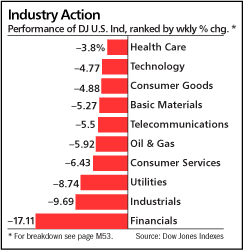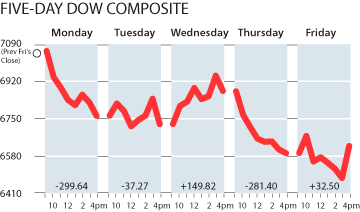The Federal Home Loan Mortgage Corporation (FHLMC) (NYSE: FRE), commonly known as Freddie Mac, is a privately-owned and run government sponsored enterprise (GSE) of the United States federal government. It is a stockholder-owned corporation, authorized to make loans and loan guarantees.
The FHLMC was created in 1970 to expand the secondary market for mortgages in the US. Along with other GSEs, Freddie Mac buys mortgages on the secondary market, pools them, and sells them as mortgage-backed securities to investors on the open market. This secondary mortgage market increases the supply of money available for mortgages lending and increases the money available for new home purchases. The name "Freddie Mac" is a creative acronym of the company's full name that has been adopted officially for ease of identification (see "GSEs" below for other examples).
On September 7, 2008, Federal Housing Finance Agency (FHFA) director James B. Lockhart III announced he had put Fannie Mae and Freddie Mac under the conservatorship of the FHFA (see Federal takeover of Fannie Mae and Freddie Mac). The action is "one of the most sweeping government interventions in private financial markets in decades".[1][2][3]
Moody's gave Freddie Mac securities an investment grade rating of A1 until August 22, 2008 when Warren Buffett said publicly that both Freddie Mac and Fannie Mae had tried to attract him and others. Moody's changed the rating that day to Baa3 high-yield junk bonds.[4] As of the start of the conservatorship, the United States Department of the Treasury had contracted to acquire US$1 billion in Freddie Mac senior preferred stock, paying at a rate of 10 percent a year, and the total investment may subsequently rise to as much as US$ 100 billion.[5]
Home loan interest rates may go down as a result, and owners of Freddie Mac debt and the Asian central banks who had increased their holdings in these bonds may be protected. Shares of Freddie Mac stock, however, on September 8, 2008 were worth about one U.S. dollar. On the same day the U.S dollar increased in value compared to yen and euros. The yield on U.S Treasury securities rose in anticipation of increased U.S. federal debt.[6]
Freddie Mac's primary method of making money is by charging a guarantee fee on loans that it has purchased and securitized into mortgage-backed security bonds. Investors, or purchasers of Freddie Mac MBS, are willing to let Freddie Mac keep this fee in exchange for assuming the credit risk, that is, Freddie Mac's guarantee that the principal and interest on the underlying loan will be paid back regardless of whether the borrower actually repays.
Officially, Freddie Mac is not given any backing, insurance, or statutory support by the US Government. Unofficially, it has long been assumed that the corporation, along with its sister GSE, the Federal National Mortgage Association (Fannie Mae), were "too big to fail". Both companies often benefited from an implied guarantee of fitness equivalent to truly federally-backed financial groups.
As of 2008, the Federal National Mortgage Association and Freddie Mac owned or guaranteed about half of the U.S.'s $12 trillion mortgage market.[15] This made both corporations highly susceptible to the subprime mortgage crisis of that year. Ultimately, in July of that year, the speculation was made reality, when the US government took action to prevent the collapse of both corporations. The Treasury Department and the Federal Reserve took several steps to bolster confidence in the corporations, including extending credit limits, granting both corporations access to Federal Reserve low-interest loans (at similar rates as commercial banks), and potentially allowing the Treasury Department to own stock.[16] This event also renewed calls for stronger regulation of GSEs by the government.
Subscribe to:
Post Comments (Atom)


No comments:
Post a Comment